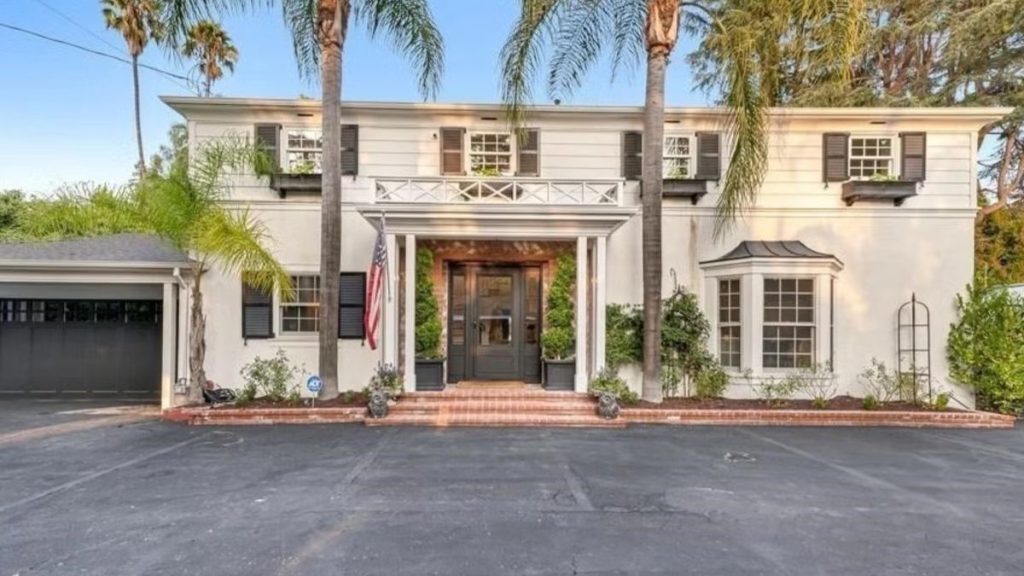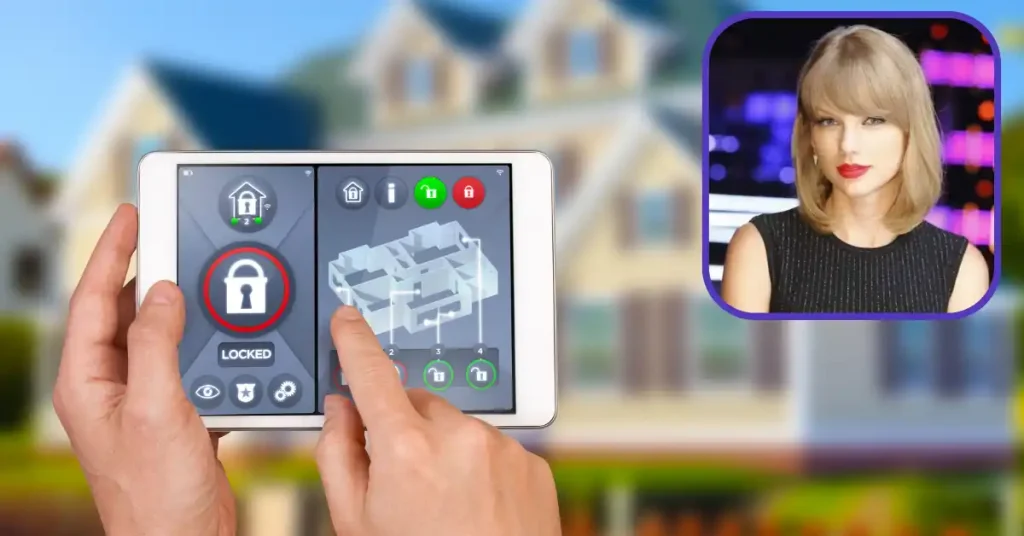BLM Spends Donations on $6 Million California Mansion: What Happens Next?
When large sums of money are donated to organizations, the expectations are high. Donors trust that their contributions will be used responsibly, often in ways that benefit the cause they support. However, when these funds are used for high-profile purchases, such as multi-million-dollar real estate, it can raise ethical and security concerns.
This is especially true for charitable organizations like Black Lives Matter (BLM), which faced backlash after using donated funds to purchase a $6 million mansion in Southern California. As reported by New York Magazine, the purchase of this luxury home has sparked debate on how charitable donations should be spent, with many questioning the transparency and accountability of such high-value investments.
Alongside the financial concerns, the security challenges posed by owning such valuable property also come into focus, making it clear that charities must consider both financial ethics and home security when making significant real estate investments.
The Controversy Around Charity Spending
The $6 million home purchased by Black Lives Matter (BLM) has drawn significant criticism, with many questioning how donations intended for social justice initiatives ended up being spent on real estate. The organization has faced accusations of financial mismanagement, with some donors feeling misled about how their money was used.
As reported by The New York Post, this controversial purchase came under intense scrutiny after being publicly disclosed. Critics argue that while the organization’s mission is to fight for social justice, buying a luxury property with millions of dollars in donations undermines that goal.
The report reveals that the mansion, located in Southern California, was not only an expensive real estate investment but also raised concerns about the organization’s transparency and accountability. For many, this event highlights a larger issue within the charitable sector—how non-profits allocate funds, especially when it comes to large, high-value purchases.
In light of this, public trust in organizations like BLM could be impacted, not just because of the purchase itself, but because it signals a lack of clear communication about how donated funds are being used.
The outcry also brings to the forefront the growing need for transparency in charitable organizations, particularly when making major financial decisions that are likely to be scrutinized by both the public and donors.
Real Estate and Security Considerations for High-Value Homes

Purchasing a multi-million-dollar home comes with numerous financial considerations, but it also introduces significant security challenges. When high-profile organizations like BLM invest in luxury real estate, they inadvertently expose themselves to increased risk. Large, expensive properties often become targets for burglaries or vandalism, and the public attention surrounding such purchases only heightens these security concerns.
The New York Magazine highlights not only the financial concerns but also the security risks associated with owning a high-profile property. For organizations like BLM, which have garnered considerable media attention, securing such homes becomes a top priority. Ensuring that these properties are adequately protected from unauthorized access is critical, as the public nature of their purchases can make them prime targets for criminal activity.
High-value homes require advanced security systems that go beyond the typical residential protections. Some of the key features that should be considered for securing luxury properties include:
- Surveillance Systems: High-end CCTV cameras with smart monitoring capabilities are essential to ensure that all areas of the property are covered. Surveillance footage can help deter potential intruders and provide evidence in case of a breach.
- Smart Access Control: For properties that may have multiple entry points, it’s important to have smart locks, biometric access systems, and keyless entry to prevent unauthorized access. These technologies provide enhanced security and allow for better monitoring of who enters and exits the property.
- 24/7 Security Guards and Monitoring: Many luxury properties require on-site security personnel who can provide real-time monitoring and respond immediately to any suspicious activity. Additionally, connecting the property to a 24/7 monitoring service ensures that any threats are addressed promptly.
- Safe Rooms: In certain cases, high-profile individuals or organizations may require the addition of safe rooms within their homes. These secure spaces provide protection in case of an emergency or security breach.
The mansion purchased by BLM is an example of how significant real estate investments not only require financial planning but also extensive security arrangements. The risks associated with owning a high-value property necessitate a comprehensive approach to security, something that organizations must factor into their decision-making process.
What Charities Like BLM Can Learn from This Situation?
The BLM mansion controversy serves as a case study for other non-profits and charitable organizations managing large donations. Whether the purchase was justified or not, one takeaway is clear: transparency is non-negotiable when handling public contributions. Every financial decision—especially one as significant as acquiring a multi-million-dollar home—needs to be backed by clear, public-facing communication.
When large real estate transactions are made without context or explanation, it opens the door to public suspicion. Organizations can protect their reputation by proactively publishing financial reports, explaining major expenditures, and aligning real estate purchases with their stated mission. A lack of transparency, even with good intentions, can weaken public trust and create long-term reputational damage.
From a security standpoint, any organization investing in property must also consider how such homes will be used. Is the location going to be a private residence, an office, a retreat space, or a multi-purpose facility?
The intended use determines the security protocol. If the property is to host staff, volunteers, or guests, the security systems must match the traffic and exposure. The higher the footfall and public visibility, the stronger the security infrastructure needs to be.
Failing to consider these logistical and security aspects can result in both physical risk and public backlash—two issues that can severely impact an organization’s credibility and operational safety.
If you are thinking of buying a beautiful house in LA, then you should check this guide in which all details are discussed for buyers: $800,000 for a Home in San Fernando Valley? What LA Buyers Face in 2025
Improvement in Home and Security Measures for Charities

For organizations handling large amounts of public funds, securing their real estate assets isn’t just a recommendation—it’s a responsibility. In the case of the BLM mansion, the backlash highlights what could go wrong when security and transparency aren’t prioritized equally.
When it comes to improving home and security measures, organizations should take a structured approach:
- Start with a Security Audit: Conduct a professional audit to identify vulnerabilities in and around the property. This includes entrances, surrounding areas, digital access points, and visibility from public spaces.
- Install Adaptive Security Systems: High-value homes need more than standard alarms. Investing in AI-based surveillance, facial recognition systems, and remote-controlled locking mechanisms can significantly elevate security levels.
- Limit Physical and Digital Exposure: For charitable organizations, keeping a low-profile footprint on the property (e.g., no large signage or branding) can reduce the likelihood of unwanted attention. Similarly, digital security, including firewall protection and secure remote access, must be part of the setup—especially if the property is used for operational purposes.
- Create Emergency Protocols: Property security isn’t just about preventing break-ins. Charities should establish clear protocols for fire, data breaches, trespassing, or aggressive protests. Training staff or residents in emergency response can make a critical difference during a security threat.
- Regular Review and Upgrades: Security technology evolves rapidly. Organizations should schedule reviews of their security setup at least once a year to incorporate the latest advancements and respond to changing threat landscapes.
By focusing not just on financial decisions but also on the security framework around those decisions, charitable organizations can uphold donor confidence while protecting their assets. The goal is to create a model where transparency and safety go hand in hand—especially when the property involved is as visible and valuable as the one discussed in the BLM report.
Balancing Privacy and Public Accountability
When organizations buy luxury properties using donations, privacy and transparency can clash. Charities need privacy to protect their staff and operations. But donors expect openness, especially with high-value purchases. The BLM mansion case shows what happens when that balance isn’t managed well. Lack of clear communication leads to public doubt.
To protect privacy, smart home security features like gated entry, security cameras, and discreet layouts are useful. These reduce risk without drawing unnecessary attention. Still, charities must share how the property supports their mission. Without revealing sensitive details, they can explain the purpose and use of the space.
Being private doesn’t mean being secretive. It means being secure—while also being responsibly open with supporters.
Conclusion
The BLM mansion report highlights how public-facing organizations must handle property ownership with care. Whether it’s about maintaining security or being transparent with donors, every step matters. Luxury real estate comes with serious responsibilities—both in terms of safety and public trust.
Organizations can avoid controversy by securing their properties, sharing clear details about their use, and ensuring every decision reflects their mission. In today’s world, where attention spreads fast, smart home security and clear communication go hand in hand.
Want more updates on home security, responsible property management, and real estate best practices? Visit our website for the latest insights.
Disclaimer: This article is based on publicly available news coverage and is intended for informational purposes only. The focus of this content is on home security and organizational responsibility. No assumptions are made about the individuals or organizations involved beyond what has been reported.


